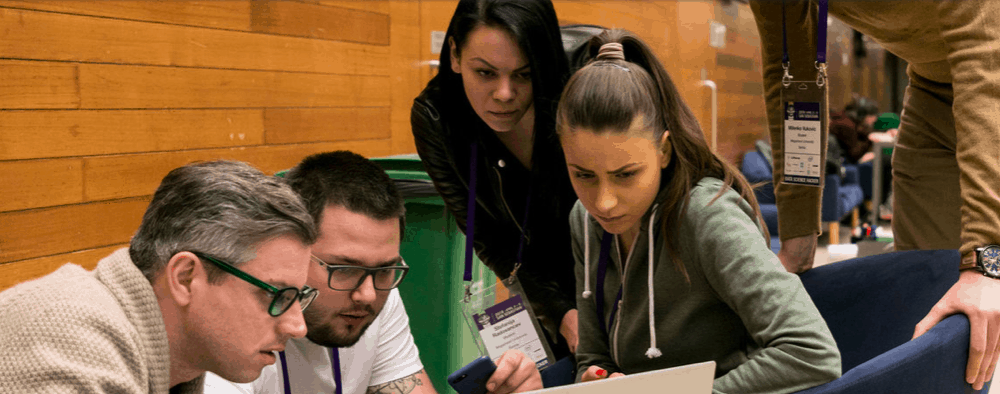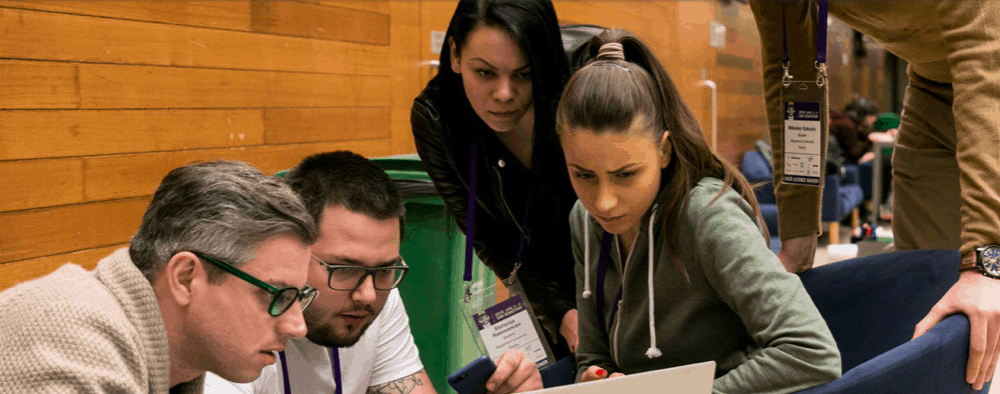Last week I had the honour to speak and lead a data science hackathon at the I-com conference in Malaga. I have never been surrounded by so many brilliant people in my life. What fascinated me was how much behavioural designers and data-scientist have in common, and yet, how little both disciplines know about each other, or even collaborate with each other.
Why I fell in love with Data Science
What data-scientists do is they look at data sets, look for patterns in that data and use that understanding to build a model that could predict behaviour. Their models predict things like: “What products will new mums buy more or less?” or “when will you watch what kind of content on which device?”, or “in which region can you stop distributing product catalogues, without hurting sales?”. I saw teams in the 24-hours hackathon come up with mindblowing predictions. And I felt really stupid for not understanding a single bit of how they build their models. But the thing is: I don’t need to because the computer simply calculates the predictive power of the model, so there’s no cheating or bullshitting possible. Fascinating stuff.
The blind spot of Data Science
There is, however, a very big limitation to this approach. And that’s the fact that we’re dealing with humans. It’s not because I can predict to a certain extent your future behaviour, based on data-analysis, that I wouldn’t be able to influence you to make different choices. After all, our choices are heavily influenced by how choices are being presented to us.
I can make you reconsider the choice of buying a camera, by letting you choose between three, instead of two models. If I present you with three models, you are far more likely to chose the middle one. And you wouldn’t have chosen it if I only had shown you two. If I play loud music in a restaurant, you will buy more unhealthy food. If I would prime you with images of Italy, you will buy more Italian food. If I add urgency and scarcity to buy the last items of a sales promotion, you will probably choose differently. The means for screwing up the behaviour that is predicted by the model are endless.
Meaning versus Reach
The challenge with the classic behavioural design method of interviewing and observation is that it’s very rich on meaning but poor on reach. And data science has exactly the opposite problem: the insights are scalable, but they are not rich in meaning. The fact that new mums buy much more housecare products, but buy far less mouthcare products , doesn’t explain why they do that. If you can understand why people do the things they do, you can easily figure out new ways to optimize your marketing.
How to collaborate?
The answer is simple: Design a creative process that leverages the best of both worlds. I would always follow these steps:
Let the whole team do interviews to develop a deeper understanding of how the target audience thinks, feels and behaves. This helps them to overcome their own biases, assumptions and prejudices and helps them to build interesting hypotheses.
Analyse the data you have with the hypothesis you’ve just formed. Try to figure out which hypothesis actually predict behaviour. But also: dare to go back: if you find interesting other patterns (e.g. non-parents buy way more deodorants than new parents), try to see if this insight could help you to revise your deep understanding of the drivers of the behaviour of your audience
Once you’ve developed a predictive model, based on qualitative and qualitative results, use Behavioral Design principles to come up with ideas for improvements of the customer journey
The fun part: Prototype, test and measure. Design experiments, measure results, improve your overall plan. Aggressive experimentation is what sets apart the truly innovative companies from the laggards.
This is such an interesting time to really make a measurable impact. But everyone’s struggling with the HOW-question: how to turn a deeper understanding of behaviour into business value. The creative method is the answer.
#justsaying 🙂
Have a great day,
Tom
Want to learn more?
If you want to master the science of influence yourself, you could consider enrolling in our two-day course Behavioural Design at our SUE | Behavioural Design Academy. You can download the Academy brochure.
Or maybe you currently have a challenge in which you want to influence choice or change behaviour. Please, take a look at our Behavioural Design Sprint. It might be the answer you’re looking for.
Or could be you just would like to get to know us a little better. We happily introduce ourselves here.

